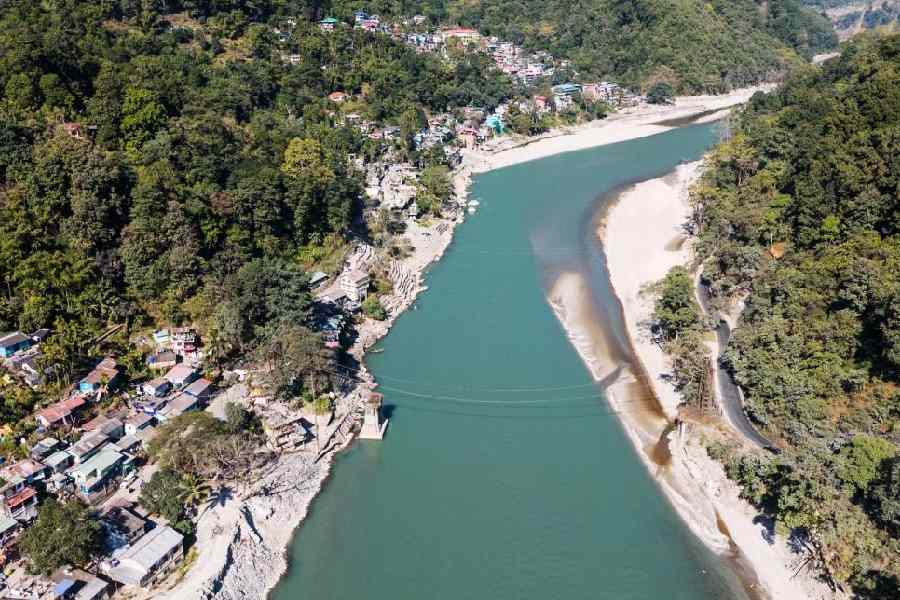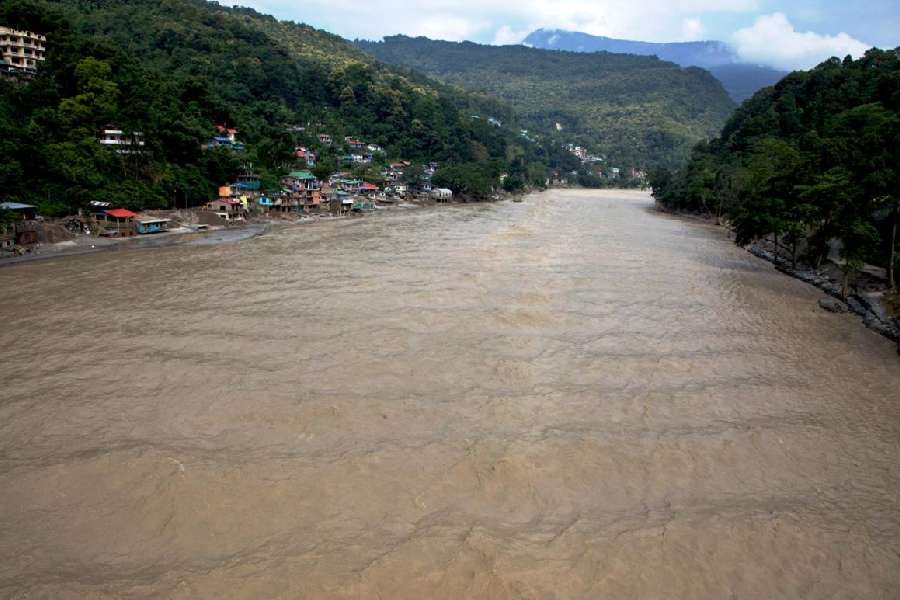The Teesta is limping back to normality through natural processes, albeit slowly, almost a year after a glacial lake outburst flood (GLOF) wreaked havoc on the Sikkim-Darjeeling region.
However, many lives have yet to heal because of a slow trickle of compensation for the affected families.
On the intervening night of October 3 and 4, 2023, a flood triggered by the glacial outburst of the South Lonark Lake in Mangan district of Sikkim swept away India’s second largest dam, the 1200MW Sikkim Urja Teesta-III hydel project built at a cost of ₹13,965 crore.
Thirty-three bridges were washed away in the GLOF, which also damaged around 3,600 houses and 920 shops, and affected around 88,000 people in Sikkim.
In Kalimpong district of Bengal, 483 houses were fully damaged and 76 homes were partially damaged.
Wing Commander (retired) Praful Rao, founder of SaveTheHills (STH), shared with The Telegraph photographs of the destruction caused by the GLOF along the Teesta in October 2023 and the state of affairs a year later in December 2024.
“The current dry season offers an ideal window for implementing necessary preparations. However, no proactive measures have been taken towards this end. We have voiced our concern by writing to the highest levels in the country,” said Rao, explaining his decision to come up with comparative scenes of the Teesta.

The Teesta as seen on December 18 this year with its characteristic emerald-green colour after shedding much of the silt and debris deposited by the GLOF.
The STH is an organisation that raises awareness of landslides in the Darjeeling and Sikkim Himalayas.
Rao, who on December 18 revisited some of the areas affected by the GLOF, made the following observations:
River condition: The Teesta has shed much of the silt and debris left by the October 2023 GLOF and is regaining its characteristic emerald-green winter hue. In some stretches, the river carved out a defined channel, reducing its erratic flow over the debris of three-four meters deposited during the disaster.
Mitigation efforts: No visible disaster mitigation efforts were underway at Teesta Bazar in Kalimpong district or the surrounding areas. Residents Rao spoke to expressed deep frustration over the lack of action.
Local economy: Rafting activities have resumed in the Teesta/Labar Boatey area, providing direct and indirect employment to approximately 2,000 people.
Tribeni Covid Hospital: A footpath to the Tribeni Covid Hospital near Teesta Bazar is functional. However, much of the hospital’s infrastructure had been washed away by the floods or looted post-disaster, leaving it in a dire state.
NH10 condition: On the short stretch of NH10 Rao travelled, significant repairs were underway near Likhu Bhir in Darjeeling district. However, areas around 29th Mile and Melli remain vulnerable, with visible cracks and sinking sections near the riverbank. These areas are at serious risk of collapse during the next heavy rains.
The Sikkim government had presented a report to Prime Minister Narendra Modi, estimating that the state would require ₹3673.25 crore for recovery and reconstruction.
The Union government had released ₹44.80 crore to Sikkim immediately after the flood from the central share of the State Disaster Response Fund (SDRF).
On the other hand, victims in Bengal have not yet received major help either from the state government or the Gorkhaland Territorial Administration (GTA). The Bengal government had promised ₹25 crore to the GTA but sources said the funds did not reach the hill body.
The Kalimpong district administration distributed only ₹75,000 as compensation for fully damaged houses and ₹5000 for partially damaged homes. The victims, however, said the compensation was meagre.
Sources said the GTA had approached the NHPC seeking compensation of ₹12.5 crore.

